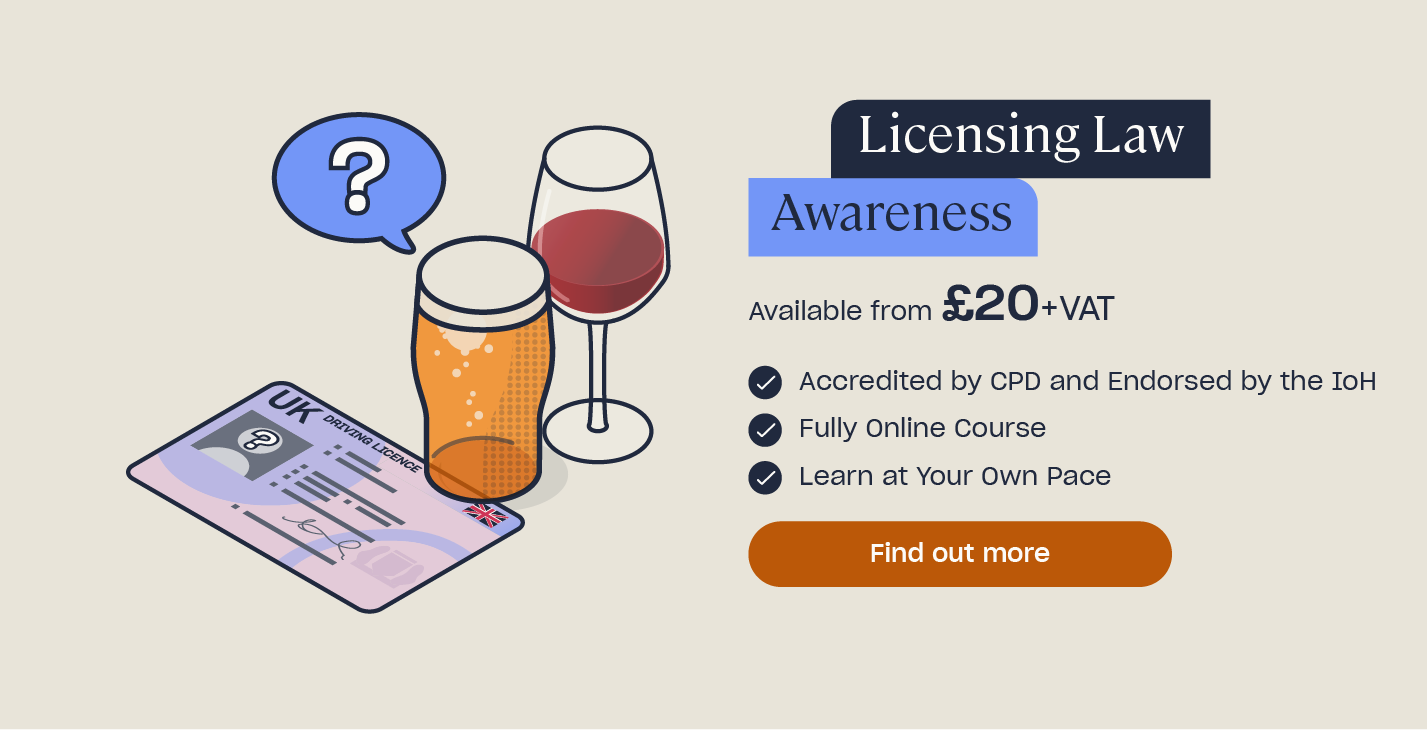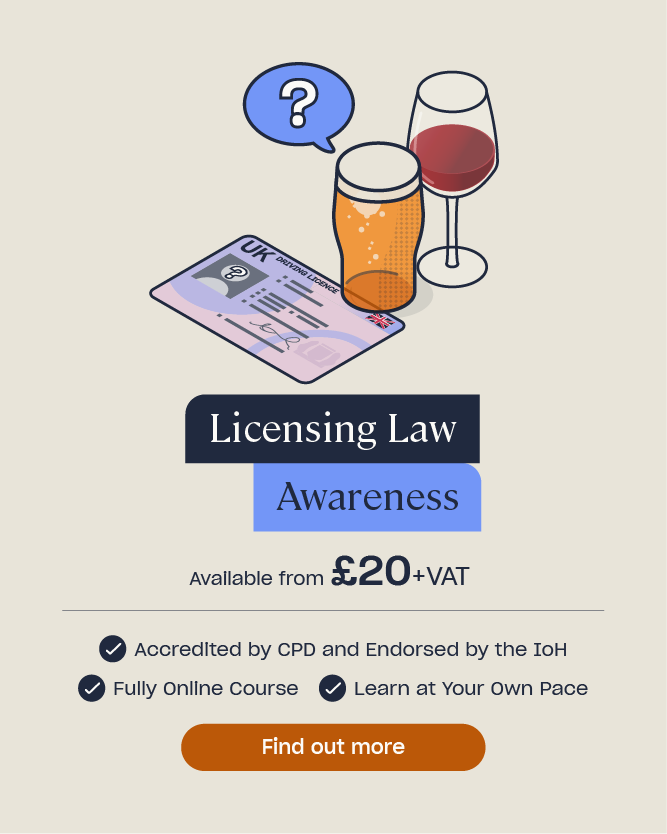Licensing Law Awareness: Do You Know How to Spot a Fake ID?
Most people are aware that, under the Licensing Act 2003, it’s against the law to sell alcohol to anyone under the age of 18.
This is a simple law to abide by but it can sometimes prove to be tricky in practice:
What if someone looks older than they actually are?
How do I know how to spot a fake ID?
What if you get it wrong?
To help you adhere to this law it’s a good idea to ask anyone who you think may be under-age for identification. By asking people to prove their age you will avoid accidentally selling alcohol to a minor and avoid facing the penalties for doing so.
You may already be familiar with the ‘Challenge 25’ scheme which looks to help you with this – the scheme simply informs the customer that if they’re lucky enough to look under 25, then you will ask them for proof of age before approving the sale.
Yet this still presents us with a further problem: how do you know if the ID you are given is real? It’s against the law for a child to use a fake or borrowed ID to buy alcohol but this doesn’t mean that they won’t try.
Fake ID cards are easily obtained online or borrowed from older friends and siblings and so they commonly make their way into our bars, pubs, shops and supermarkets. So what can be done about it?
Acceptable Forms of ID
When you ask a customer for identification there are only three acceptable proofs of age that you should accept:
- A valid passport.
- A photo driving licence.
- A Proof of Age Standards Scheme (PASS) card.
Each form of ID must contain a photograph of the person, their date of birth, and an official hologram.
It’s essential that you check these things very carefully to ensure that the photo is of the right person and to make sure that it’s real, not fake. It’s more commonplace than you think for young people to borrow an ID card from an older friend or sibling to try and buy alcohol.

Unacceptable Forms of ID
Aside from passports, driving licences and PASS cards as stated above, all other forms of ID should not be accepted as proof of age. This includes items such as:
- Student cards.
- Birth certificates.
- Library cards.
- Bus/train passes.
- Credit/debit cards.
If a customer tries to give you any of these as their proof of age then you should not approve the sale until a valid form of ID is presented. You may wish to explain the law to the customer, plus the fines you may face if you sell alcohol without valid proof of age.
Types of Fake ID
Government guidance explains that there are five types of false documents:
- A genuine document which is being used by someone else, e.g. a child using their older sibling’s passport.
- A genuine document which has been altered, e.g. a driving licence with the date of birth scratched off.
- A genuine document which has been fraudulently obtained, e.g. a real passport that has been stolen and used by somebody else.
- A fake document which is a copy of a genuine document, e.g. someone replicating a person’s existing driver’s licence.
- A fake document which is a form of ID that does not exist, e.g. a provisional motorcycle licence.
The most common fake ID includes those that look like driving licences, such as national identification cards, European or international driving permits and provisional motorcycle licences.
How to Spot a Fake ID Card

You may identify a fake PASS Card by the following features:
- A hologram that is stuck on top of the plastic, rather than being smooth.
- An artificial looking hologram in appearance.
- A photograph that is stuck on top of the plastic.
- A photograph that doesn’t match the person presenting the ID.
- An incorrect date of birth.
- Details that have been altered or tampered with.
- A non-smooth surface.
Authentic UK PASS Cards Must Have:
- A 3D hologram with the characteristic ‘A’ in the lettering.
- A photograph that matches the person.
- A valid date of birth – you can calculate the person’s age from their DOB or look for the ‘18+’ symbol on the card.
- A flat, smooth surface.
How to Spot a Fake Driving Licence

You may identify a fake driving licence by the following features:
- An incorrect flag image.
- The wrong words across the top, e.g. ‘National Identification’ or ‘International Driving Permit’.
- Different languages.
- A plain or simple-patterned background.
- A photograph in the wrong place.
- No signature/an incorrect signature.
- Fake holograms.
- Information in the wrong places.
Driving licences are designed to be difficult to forge and possess many features that are hard to copy.
Authentic UK Driving Licences Must Have:
- A first name, surname, date and place of birth.
- A date of licence issue, photo expiry and issuing authority.
- A driver number.
- A valid photograph (black and white on newer photocards).
- The holder’s signature.
- The holder’s address.
- Entitlement categories.
- A hologram of a steering wheel over the person’s photograph which ‘turns’ as you move the card.
- Further holographic images on the front.
- Pictograms on the reverse.
- A green/gold steering wheel image on the reverse.
- Information codes.
- A complex background pattern.
How to Spot a Fake Passport

The British government change UK passports slightly every 5 years to prevent the production of genuine-looking fake passports.
Authentic UK Passports Must:
- Be the right size (around 125 x 88mm).
- Passports issued after November 2015 have 34-pages.
- Passports issued before November 2015 should have 32 pages (48 for a business book).
- Feature a digitally printed photograph with holographic overlay.
- Have a 9-digit number on page 1.
- Have a perforated serial number throughout the pages.
- Feature the holder’s signature.
You may identify a fake passport by the following features:
- An invalid expiry date.
- Personal details that have been amended or tampered with.
- An incorrect number of pages for the time it was issued.
- A photograph that isn’t digitally printed.
- No holograms or perforations.
- No passport chip.
- Words, signatures or pictures in the wrong places.
Passports are the only other type of identification that you should accept from a customer. This can be a UK passport or a foreign passport, although it’s harder to determine the validity of a foreign passport if you are unfamiliar with their design.
There are slight differences between older & newer passports. Differences include:
- The number of pages.
- The page designs.
- The presence of a chip: passports issued after 2010 have a chip in the cover of the passport whereas older passports have the chip located on page 32.
What to Do if You Come Across a Fake ID
If a customer presents you with a fake ID then it’s important that you deal with it correctly.
If you are not satisfied that the ID is genuine then you should always refuse the sale and ask the person to leave the premises. You should then make a note in your refusals/incident book.
Only certain people have legal powers to seize false ID but, if presented with it, you may ask the customer to hand the ID over to you.
It’s also within your rights to mention that the police may be called to investigate if they do not hand over the fake ID.
Once in your possession, you should store the ID in a secure place until the police can collect it or a manager can take it to the police station.
The UK government recognise door staff as the frontline of defence against fake ID. Therefore, it is their view that you are not committing a criminal offence by confiscating the ID as you lack the dishonest intent necessary to commit the offence of theft. This gives door staff the ability to confiscate false ID under common law. If you do confiscate a fake ID, it’s a good idea to record any confiscated ID in an incident book
How to Improve Your Licensing Law Awareness
Licensing Law Awareness Training is designed to raise awareness of what your responsibilities are under the Licensing Act 2003, outlining the key objectives of the Act and explaining how premises and licence holders can ensure that they are achieved by making their establishments safe and welcoming places to be.
The Licensing Act 2003 applies to all premises in England and Wales where alcohol is sold or supplied, where regulated entertainment is provided to more than 500 people or where the premises provides late night refreshments.
Training is suitable for anyone who has responsibility for premises covered by the regulations, including employers, Designated Premises Supervisors and Managers.
Further Resources:
- Restaurant Hospitality Quiz
- Interview Questions for the Hospitality Industry: A Guide for Employers
- Refusal of Sales Log & Why do I Need One?
- Cellar Cleaning and Maintenance Schedule for Busy Pubs and Bars
- What Happens If I Fail a Test Purchase? Your Questions Answered
- Interview Questions for Bartenders







